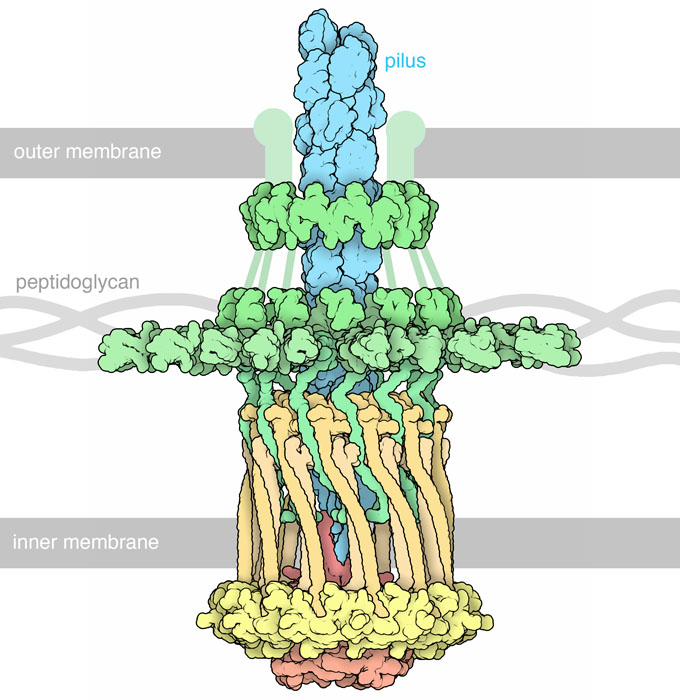
- Details
- Tuesday, 11 July 2017

Bacteria live in complex ecologies, filled with competitors, environmental dangers, and defensive hosts. They face these challenges in many ways: by gathering together into tough biofilm communities, by sharing genetic information encoding useful proteins, and by picking up and moving when things look better elsewhere.
Pili play an important role in all of these responses. Pili are long, thin protein filaments that help bacteria adhere to their local environment. They come in many shapes and sizes, and are deployed from the cell surface by complex assembly machines.
Constructing Pili
The molecular machine shown here, from PDB entry 3jc8, builds one of most widespread forms of pili, termed a type IVa pilus. The pilus is extended from the center of the machine, often to lengths that rival the size of the cell. The machine spans the entire cell wall: a rotary motor embedded in the cytoplasmic membrane adds new subunits, a collar guides the growing pilus through the outer membrane, and a ring of proteins anchors the whole thing to the peptidoglycan layer that fills the space between the two membranes. The structure was modeled by fitting atomic structures of the individual proteins into a cryo-EM tomograph (EMD-3247) that shows overall morphology.
Cells in Motion
This pilus machine is built by a predatory soil bacterium that forms swarms of cells that search for bacterial prey. These cells use the pilus machine like a grappling hook to crawl, by extending a pilus, attaching it to a surface, then reeling it back in. Since it requires a lot of force to drag the entire cell, these assembly machines are among the most powerful molecular motors known.
